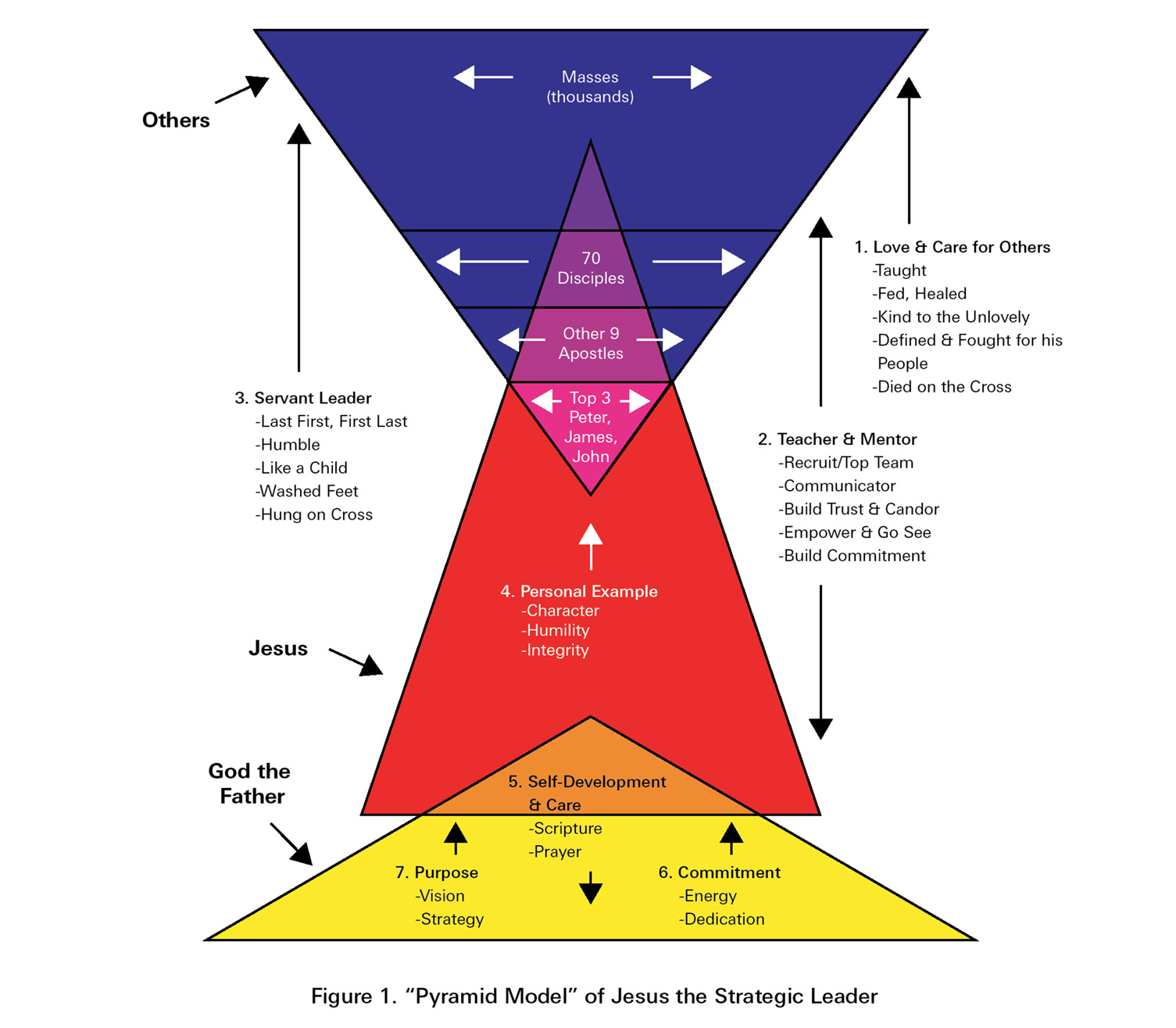Jesus Kills
Do unto others, before they do unto you
Steve Featherstone

This chart was conceived by Lieutenant Colonel Gregg F. Martin, US Army, and included as part of a research paper entitled “Jesus the Strategic Leader.” Martin, who wrote the text as a student at the Army War College in 2000, defines seven key elements of Jesus’ leadership style and presents them as a model for military officers.
The top, inverted pyramid outlines Jesus’ “outputs” or actions, culled from Martin’s reading of the Gospel According to Mark. The bottom pyramid describes the heavenly “inputs” from which Jesus drew “purpose and strength.” Given all the examples of successful military leaders in the Old Testament (for example, “Saul hath slain his thousands, and David his ten thousands,” I Samuel 29:5), Jesus is a curious choice: the New Testament doesn’t record a single death attributable to Jesus or his disciples.
How can Jesus’ mission of love and sacrifice be reconciled with military goals, which are defined by the controlled application of violence? Martin provides this example, among others: when Jesus takes his disciples up a mountain, he separates out Peter, James, and John and reveals his divine identity to them, an episode commonly known as the Transfiguration. The average military officer probably lacks the ability to channel the voice of God, but that shouldn’t stop him, Martin insists, from recruiting a “top team” of subalterns to whom he can pass on the army’s “inner secrets” and “keys to the kingdom.”
Steve Featherstone is a writer and photographer from Syracuse, New York. His work has appeared in Harper’s, Granta, and The Baffler, among others. A book of his photographs, along with an essay by his colleague Paul Maliszewski, is forthcoming from Princeton Architectural Press.
Spotted an error? Email us at corrections at cabinetmagazine dot org.
If you’ve enjoyed the free articles that we offer on our site, please consider subscribing to our nonprofit magazine. You get twelve online issues and unlimited access to all our archives.